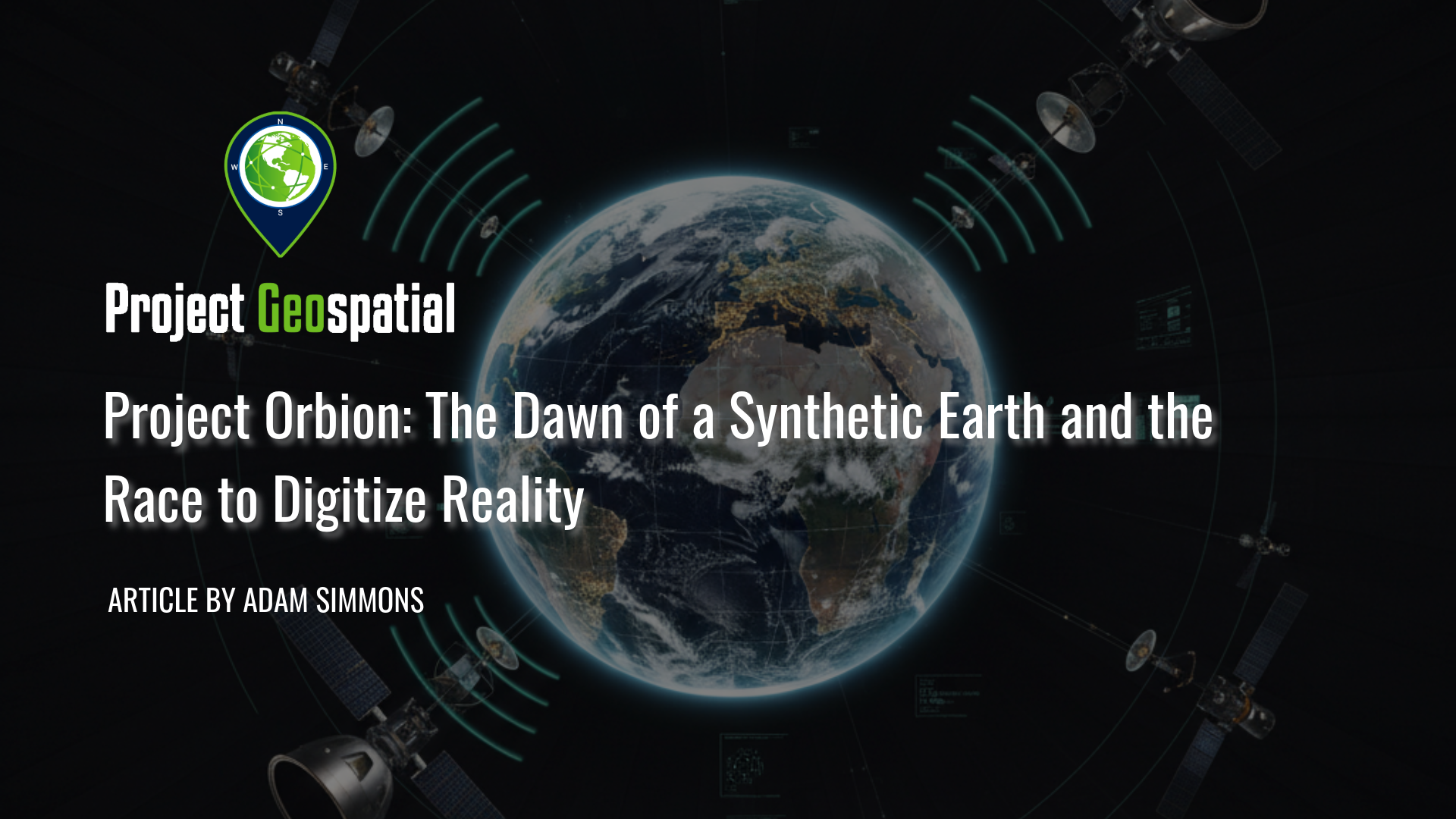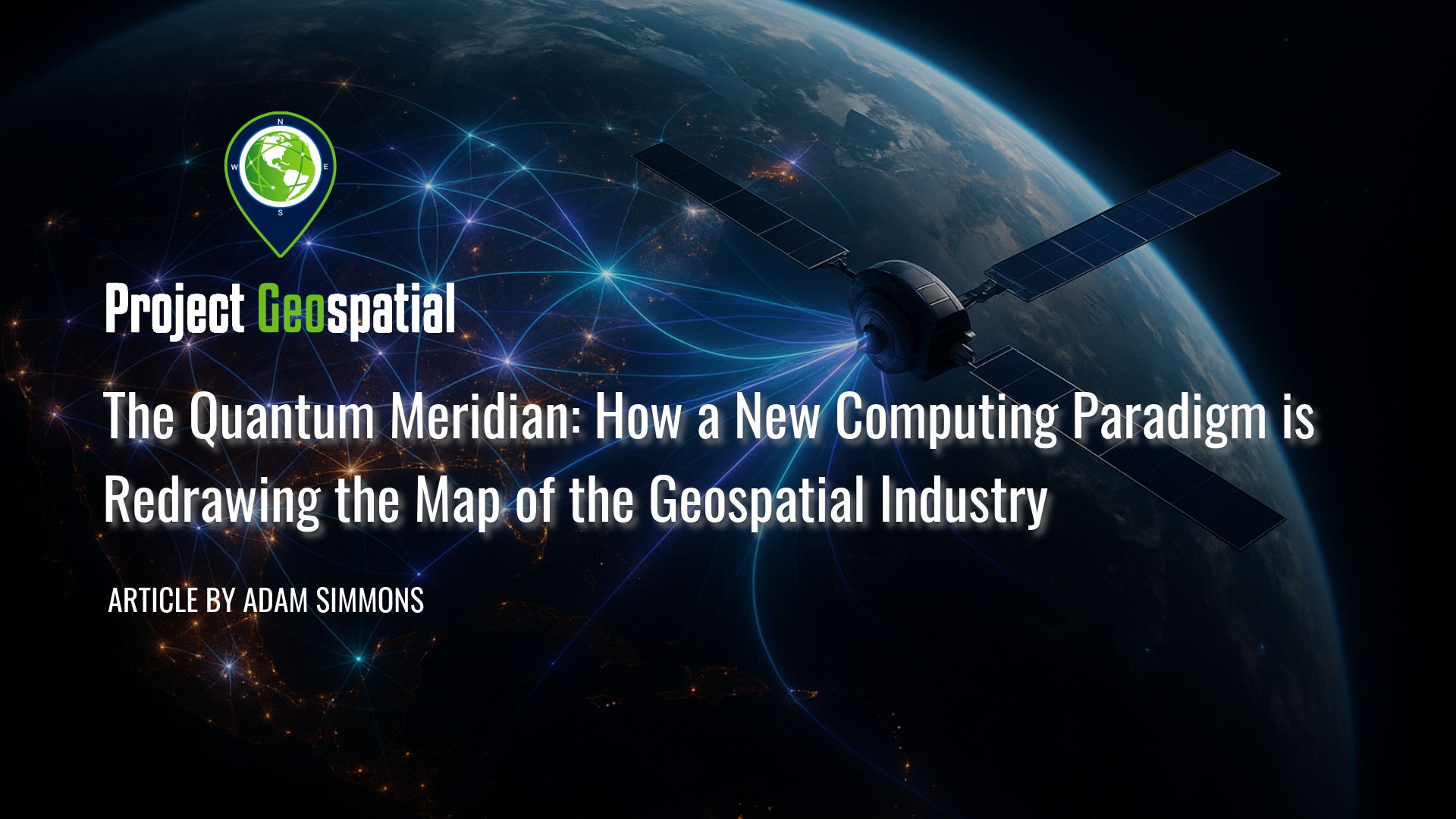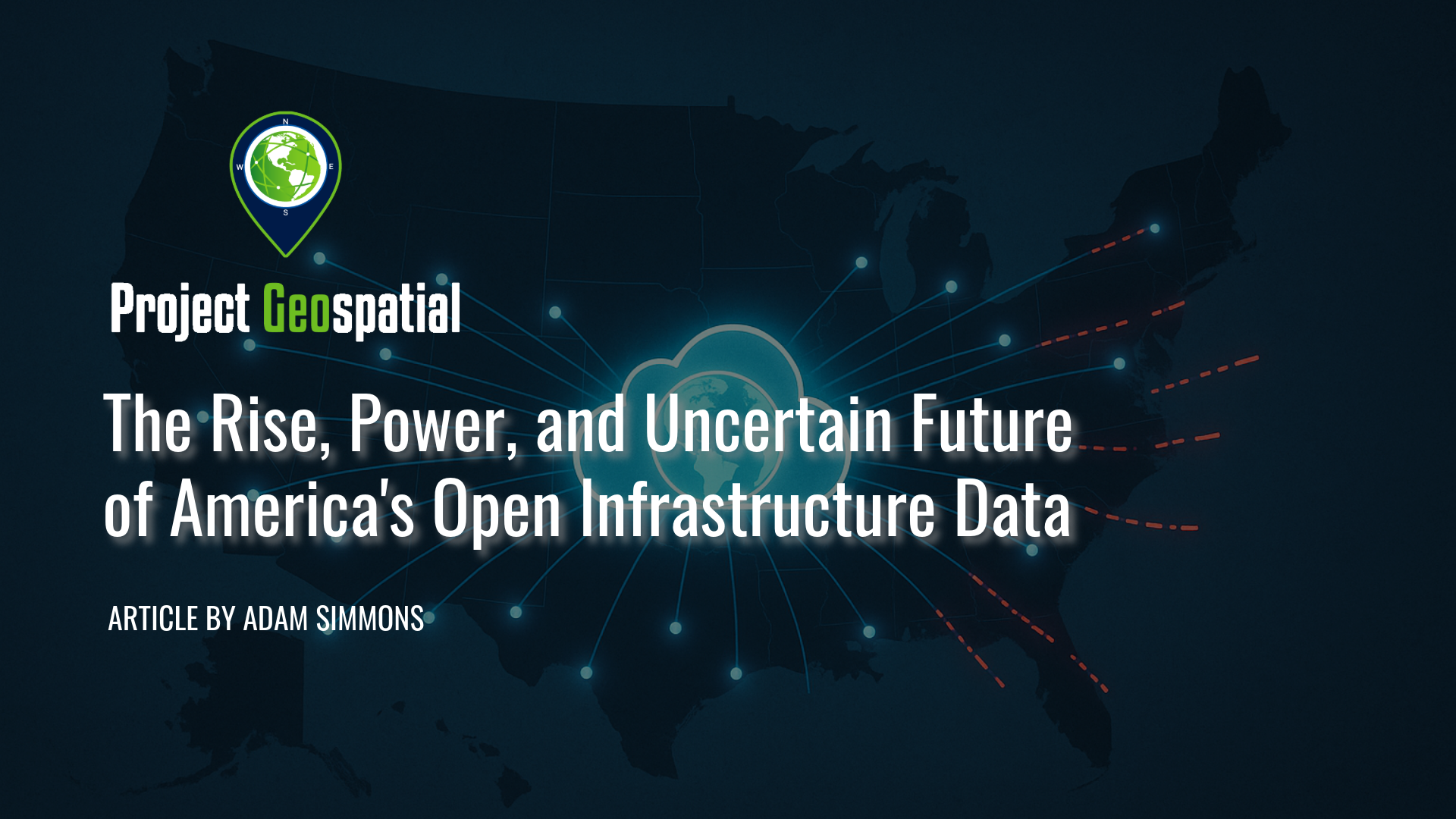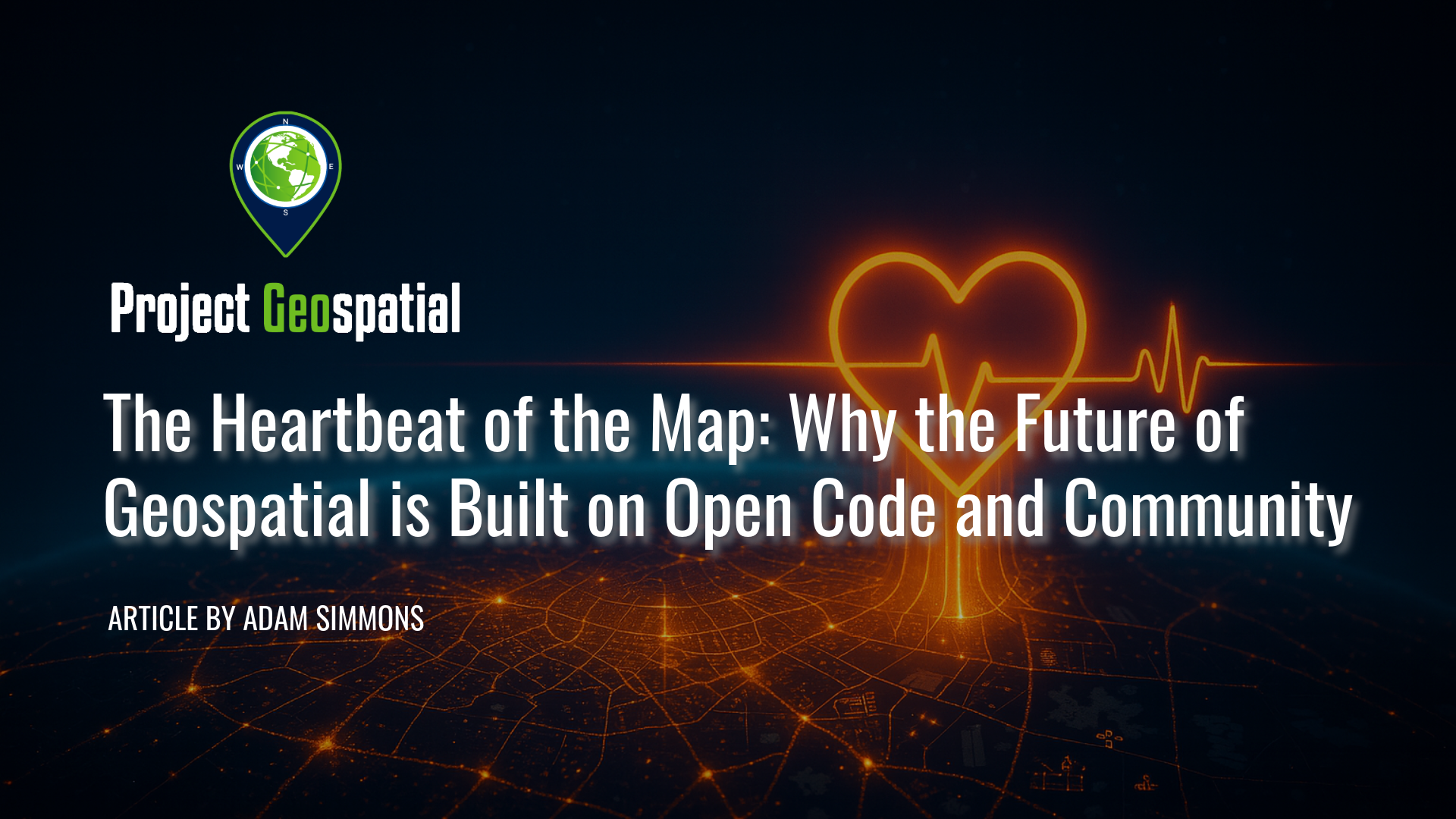
GEOSPATIAL FRONTIERS
A Publication by Project Geospatial
LOOKING BEYOND
THE MAP
Geospatial Frontiers, a new publication from Project Geospatial, brings together leading voices and experts from across the geospatial ecosystem to tackle the industry's most pressing challenges. Through in-depth articles and discussions, Geospatial Frontiers aims to explore innovative solutions and spark critical conversations that will shape the future of geospatial technology and its applications.
AUTHORS
Adam Simmons
Keith Barber
Fred Woods

The Concrete Archipelagos: A Geospatial Excavation of Project NIKE and the Architecture of American Nuclear Defense
Discover the forgotten "Ring of Steel" that once protected America's cities from Soviet bombers. Based on a remarkable crowdsourced Google Earth KML file from a hobbyist imagery analyst, this article unveils the sprawling network of Project NIKE missile sites. Explore the history of this massive Cold War missile defense system, from the initial Nike Ajax to the nuclear-armed Nike Hercules, and see how these batteries formed defensive shields around vital population centers and industrial hubs. This journey through geospatial history not only illuminates a hidden era of national defense but also sparks a thought-provoking reflection on what constitutes critical infrastructure—from data centers to advanced manufacturing—in our modern world.

Deploying Wireless Sensor Networks: Enabling Scalable Intelligence in Contested Environments
Modern defense operations face a critical intelligence gap in contested environments, where high-value ISR assets are too risky to deploy and Open Source Intelligence (OSINT) lacks verifiable ground truth. This article proposes a scalable framework for air-dropped Wireless Sensor Networks (WSNs) that utilizes low-cost, "attritable" COTS technology to deliver continuous, 24/7 situational awareness without risking personnel. By functioning as a tactical verification layer, these sensor swarms validate OSINT data streams and provide the persistence that satellites and manned aircraft cannot maintain. We demonstrate how this hardware integrates seamlessly with existing GEOINT ecosystems—including BAE Systems GXP, Esri ArcGIS, and DCGS-A—to close the loop between edge detection and multi-INT fusion. Discover how leveraging swarm doctrine and commercial innovation creates a cost-effective, "fire-and-forget" intelligence architecture capable of dominating future battlefields

Wireless Sensor Networks: The Missing Link in Modern Intelligence
Mature Wireless Sensor Networks (WSNs), or "motes," are the missing link in modern intelligence and ISR operations. This article argues the intelligence community's failure to adopt this mature technology is a critical strategic lapse , creating a "static-data trap". Discover why the problem isn't the technology but institutional lag , and explore a framework for integrating WSNs with COTS GEOINT platforms to finally achieve continuous, real-time situational awareness.

The Unseen Axis: How a Cold War Military Project Became the Invisible Foundation of Your World
Ever wondered how your phone knows you’re at Starbucks and not the cafe next door? Dive into the world of WGS-84, the invisible global grid that powers your GPS. Discover why this Cold War-era system is still the king of coordinates, how it's constantly updated to centimeter-level accuracy, and how it stacks up against alternatives like ITRF and NAD83. Uncover the secret language of location that silently runs our world.

The Phoenix Project: A Challenge to the Community to Forge an Open-Source Successor to HIFLD
This article issues a compelling challenge to the community: to collaboratively forge an open-source successor to the vital HIFLD portal. We present a conceptual solution, not as a finished blueprint, but as a compass to guide a collective journey forward. Join the critical conversation on building a resilient, community-owned digital commons for national infrastructure data, reclaiming our shared responsibility in the wake of a crucial public resource going dark. This is a call to action for mappers, developers, emergency managers, and all stakeholders to define the future of accessible, authoritative geospatial data.

Project Orbion: The Dawn of a Synthetic Earth and the Race to Digitize Reality
Uncover the future of Earth observation with Project Orbion, a groundbreaking European initiative revolutionizing how we understand our planet. This in-depth article explores how a powerful consortium is merging cutting-edge satellite technology—combining all-weather Synthetic Aperture Radar (SAR) with high-resolution optical imagery—to create unparalleled "Synthetic Realities" and dynamic digital twins. Learn how Orbion is poised to transform sectors from urban planning and disaster management to defense and maritime safety, offering real-time, comprehensive insights into our world. Discover the innovations driving the surging digital twin market and the pivotal role of AI in bridging human interaction with vast planetary data.

The Quantum Meridian: How a New Computing Paradigm is Redrawing the Map of the Geospatial Industry
Explore the dawn of Quantum-Geospatial Intelligence (Quantum GEOINT), a new era catalyzed by IonQ's landmark acquisition of Capella Space. This report dissects the fusion of quantum computing and Earth observation, detailing how technologies like Quantum Key Distribution (QKD) are creating unbreachable data security from orbit. Discover how quantum principles of superposition, entanglement, and interference are set to revolutionize geospatial analysis through advanced optimization for logistics and disaster response, quantum machine learning (QML) for satellite imagery, and high-fidelity climate simulations. We map the emerging ecosystem of key players, from IonQ and D-Wave to GDIT, and provide a forward-looking assessment of the challenges and strategic imperatives for navigating this transformative frontier

Cesium Developer Conference 2025: A Glimpse into the Geospatial Future, Reshaping Industries Worldwide
Explore the future of 3D geospatial innovation as charted at the Cesium Developer Conference in Philadelphia. This comprehensive recap covers groundbreaking advancements in open standards like 3D Tiles and glTF, the transformative impact of AI and Gaussian Splatting on reality capture, and the widespread adoption of digital twins in industries ranging from AEC and defense to climate resilience. Discover how Cesium's ecosystem—from CesiumJS and the Cesium ion cloud platform to powerful runtime plugins for Unreal Engine—is empowering over 400 innovators worldwide to build a more connected and intelligent virtual world

The Rise, Power, and Uncertain Future of America's Open Infrastructure Data
For two decades, the Homeland Infrastructure Foundation-Level Data (HIFLD) Open portal was the bedrock of U.S. disaster response and community planning—a free, authoritative map of the nation's most critical assets. Now, it's gone. This in-depth article explores the profound impact of the recent shutdown of HIFLD Open, from its origins in the wake of 9/11 to its vital role in responding to hurricanes and wildfires. Discover what made this curated government data uniquely powerful for emergency managers and researchers, and why its disappearance leaves a critical void that commercial and crowdsourced maps cannot fill. We examine the consequences of this decision for national resilience and the uncertain future of open data in America.

The Heartbeat of the Map: Why the Future of Geospatial is Built on Open Code and Community
In the world of geospatial technology, two powerful currents shape our digital maps: the polished, enterprise-ready ecosystems of proprietary software like Esri's ArcGIS and the passionate, community-driven innovation of Free and Open Source Software (FOSS). This is not a story of opposition, but of a complex, thriving balance. From corporate giants optimizing global logistics to volunteer armies mapping disaster zones in real-time to save lives, both models are fundamental to our modern world.
This article delves into the heart of this dynamic, exploring the philosophies that divide and the open standards that unite these two worlds. We deconstruct the powerful FOSS4G stack—featuring titans like QGIS and PostGIS—and examine the sustainable business models that prove "free" software is a viable, enterprise-grade choice.
More than just code, we uncover the soul of the movement: the Open Source Geospatial Foundation (OSGeo) and the global community that fuels its innovation. Discover why supporting this ecosystem is not charity, but a strategic investment in the foundational infrastructure of our industry. Learn why attending the annual FOSS4G conference is the single most important step your organization can take to move from being a passive consumer to an active participant in the future of geospatial technology.

Dragon Lady: Whispers from the Edge of Space
From the inky blackness at the edge of space, a slender silhouette patrols the upper atmosphere, a silent sentinel against the gentle curvature of the Earth. This is the domain of the Lockheed U-2, an aircraft known by the mythical moniker "Dragon Lady". For nearly seven decades, from the iciest depths of the Cold War to the complex surveillance demands of the 21st century, this visionary aircraft has been a constant, often unseen, factor in global geopolitics.
Born from a desperate need to peer behind the Iron Curtain, the U-2 was a high-stakes gamble. Its story is one of groundbreaking technological leaps forged in secrecy at Lockheed's legendary Skunk Works, but it is equally a story of profound human endeavor. Discover the incredible skill and courage required of its pilots, who flew solo for hours at over 70,000 feet, navigating the razor-thin margin of the "coffin corner" while sealed inside an early spacesuit.
Go behind the scenes of the U-2's most dramatic moments: the audacious first flights over the Soviet Union that dispelled the myth of a "bomber gap" ; the international crisis sparked when Francis Gary Powers was shot down in 1960 ; and the harrowing thirteen days in October 1962, when U-2 photographs of Soviet missiles in Cuba brought the world to the brink of nuclear war. How has an aircraft conceived in the 1950s remained an indispensable asset well into the digital age? Read on to explore the tapestry of innovation, high-stakes drama, and indomitable human spirit that defines the enduring legacy of the Dragon Lady.

The Silent Sentinels: Charting America's Past and Future, One Brass Disk at a Time
High on a remote mountaintop, you spot a metallic glint set in the bedrock: a weathered brass disk stamped with cryptic words and a perfect triangle. What is this object? It's a geodetic survey marker, a physical anchor from a two-century-long scientific odyssey to measure and map a continent.
This is the story of how a network of brass and sweat, laid down with grueling labor and uncompromising precision, formed the invisible framework of our modern world. Discover the audacious vision of Ferdinand Hassler, the brutal life of a survey party, and the elegant science of triangulation that transformed an unmapped frontier into a tangible nation.
But in an age of GPS, are these markers mere relics? Explore the paradox of why these "silent sentinels" are more critical than ever, anchoring our virtual, satellite-driven age to the solid ground beneath our feet.

The Unblinking Eye: How Intelligent Satellite Tasking is Revolutionizing Earth Observation
The way we observe our planet from orbit is undergoing a seismic shift, moving beyond the limitations of traditional satellite tasking to embrace a future of intelligent, interconnected Earth observation. This revolution is powered by the synergy of "virtual constellations" – diverse networks of coordinated sensors – and sophisticated "tipping and cueing" workflows, where broad-area monitoring by some assets automatically directs high-resolution satellites to points of critical interest. Underpinning this entire evolution is the transformative power of Artificial Intelligence, which not only automates the detection of subtle changes and orchestrates complex tasking but also distills vast streams of imagery into actionable insights, promising a more transparent, responsive, and understandable world.

A Visionary's Legacy: Celebrating Landsat 7 (1999-2025)
Today marks the final, quiet farewell to Landsat 7, a satellite that has tirelessly served as humanity's eye on Earth for over a quarter-century. Its incredible 2.5 million images have not only documented our planet's vital pulse – from receding glaciers to changing forests – but have also empowered countless discoveries and deepened our understanding of our world. As it drifts into its final, silent orbit, we honor its unparalleled service and the dedication of the countless individuals who guided its mission, ensuring its legacy of environmental insight endures.

The GeoAI Revolution: Charting the 2030 Geospatial Workforce Landscape
Artificial intelligence is rapidly redrawing the boundaries of the geospatial industry, unlocking powerful new insights and efficiencies at an unprecedented scale. Yet, beneath the veneer of technological marvel and the often-touted narrative of 'AI augmentation,' a more profound and unsettling transformation is underway for its workforce. This investigation delves into the stark realities of how AI and machine learning are not just reshaping, but in many cases, actively replacing traditional geospatial roles, forcing a critical reevaluation of skills, careers, and the very future of human expertise in mapping and understanding our world. As the AI wave crests, the line between assistant and successor is becoming increasingly, and for some, alarmingly, clear.

Nation at a Crossroads: FY2026 Budget Proposal Threatens to Dismantle U.S. Geospatial Supremacy, Risking Economic and Infrastructural Integrity
A stark vision for America's fiscal future now casts an ominous shadow, as the proposed Fiscal Year 2026 budget threatens a veritable demolition of non-defense federal capabilities, launching an unprecedented assault on the agencies underpinning our nation's world-leading geospatial infrastructure with a staggering $163 billion targeted for removal from base non-defense spending . This plan strikes at the heart of essential government functions, and even as it calls for "unprecedented increases for defense" , the National Geospatial-Intelligence Agency (NGA) faces a deep paradox: its direct appropriations may rise, but devastating cuts to civilian partners like NOAA, NASA, and USGS threaten to hamstring its operational effectiveness, potentially forcing NGA to divert its own increased budget to backfill widening data gaps and maintain "GEOINT Supremacy" with a critically weakened foundational support system. The reverberations are already palpable, and as the geospatial community prepares for the annual GEOINT Symposium in St. Louis, all eyes will be on leaders like NGA Director Vice Admiral Frank Whitworth and Director of National Intelligence Tulsi Gabbard, as an industry on edge desperately seeks clarity and a beacon of confidence to navigate these profoundly troubled times.

Open Source Geospatial Takes Center Stage for Resilience at FedGeoDay 2025
FedGeoDay 2025, held April 22nd in Washington D.C., was a packed and energized convergence of over 200 geospatial experts dedicated to a vital mission: building resilience through open source tools and data. Project Geospatial's coverage of the event revealed a community deeply committed to collaboration, showcasing everything from NASA's critical Earth observation data applications and foundational government datasets like USGS's 3DAP to the complexities of AI reliability, the dynamics of open data initiatives like OpenStreetMap and Overture Maps, and the necessity of robust cybersecurity. The day underscored the immense potential of open geospatial solutions in facing increasing challenges and the collective effort required to harness their power for societal benefit. The palpable energy and high turnout signaled a community ready to tackle complex problems together, leveraging open platforms for a more resilient future.

The Geodesy Crisis in the United States: A Comprehensive Analysis of its Importance, Workforce Challenges, and Potential Consequences
The United States is facing a looming crisis in its geodesy workforce, threatening the nation's capacity to maintain and advance this essential science. Our research delves into the definition, applications, and history of geodesy in the US, examining the workforce challenges and potential consequences if this crisis remains unaddressed.

Unlocking the Potential: Reimagining the Commercial Remote Sensing Market
The high cost of commercial remote sensing data is a major obstacle to widespread adoption. As Keith Barber notes, 'Right now, the price point is such that it's still cheaper to go hire 150 guys to walk that field than it is to use the technology.' By refactoring the executability of the commercial and government markets from a macro-economic perspective and moving to a Defense-wide budget, the price per image or access would decline, amortizing the value and creating a price point where commercial adoption would rapidly increase, essentially baselining the cost.


